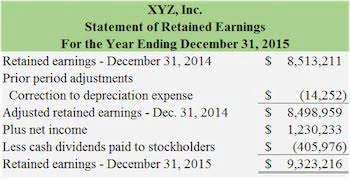
Closing the account means bringing the account’s balance to zero or nil at the end of the accounting period. In the next accounting period, a new set of temporary accounts will be opened so they can be used to record and track new transactions during that period. However, when you look at individual ledger accounts, you may notice that some of them have a total debit amount that is not equal to the total credit amount. This difference in amount is what we call the Account Balance.
Problems: The Recording Process
The excess of the credits of an asset account over the debits is the balance of the account. Double-entry bookkeeping is a widely used ledger recording method to account for a firms financial transactions. Each account in the ledger gets two entries, a debit and a credit, that must balance each other out. This gives the account entries the appearance of a T, hence the informal term T-Account is sometimes used to refer to these ledgers. Financial reports that use the double-entry bookkeeping method are referred to as T-Account informally. The appearance of the book keeping entries resembles the letter T, hence the moniker.
- Accountants sometimes use T-Accounts to visually plan out a complicated journal entry.
- To increase liability and capital accounts, they are credited.
- To be effective, one must know the concepts behind and how to use debits and credits.
- In this case, total debits is equal to total credits.
- A positive result means a debit balance; a negative result means a credit balance.
Is Double-Entry Accounting a Modern Bookkeeping System?
T-accounts show you what to put in the ledger to keep everything balanced. The left side of the T-account is for debits, and the right side is for credits. In double-entry accounting, debits and credits always need to balance out. The t-account is often used as a useful tool for accountants and students in analyzing company accounts or in solving accounting problems. To be effective, one must know the concepts behind and how to use debits and credits.
- In the Joe Smith, Capital T-Account, the $55,000 deposit goes on the right (credit) side of the account because equity is increasing.
- When a new account is added, it will be assigned an account number that is not yet used by other accounts of the same type.
- Learn more in CFI’s free Accounting Fundamentals Course.
- A business owner can use a T-account as a reference, checking a transaction on a specific date or the balance and movements of each account.
- For example, currencies, coins, checks, and bank drafts can be grouped and recorded in the Cash or Cash on Hand account.
- They make it easy to record transactions and understand the basics of accounting.
- In the Cash T-Account, the $8,300 payment of cash goes on the right (credit) side of the account because Cash is decreasing.
Contra-revenue accounts
This account will show all checking account deposits as increases to the Cash in Bank account and all cash withdrawals or check payments as decreases. In relation to a T account debit and credit simply mean left and right and not increase and decrease. Depending on the nature and size of the business, a company may use as many general ledger accounts as they need in recording financial transactions.
The Recording Process

A business does not start a new accounting period with a zero amount in its permanent accounts. Unless there are no transactions that have ever been recorded in an account or unless the items inside the account are fully liquidated, all permanent accounts will always have a balance. If all items inside the Fixed Assets account are sold in the previous period, then it is only in this case that the account will have a zero balance in the next accounting period. In this case, total debits is equal to total credits.

Journal Entry Tracking

All increases to Accounts Receivable are placed gym bookkeeping on the debit side (since it is an asset account). Total debits amount to $320,000 while total credits amount to $230,000. Therefore, accounts receivable has a debit balance of $90,000.
- One of the factors you should consider when establishing the company’s chart of accounts is the type of accounts to be used depending on the nature of your business operations.
- They give you a clear, visual snapshot of each account’s activity.
- Unless there are no transactions that have ever been recorded in an account or unless the items inside the account are fully liquidated, all permanent accounts will always have a balance.
- A T-account is a simplified or informal version of an account used to show increases and decreases in recording business transactions.
- Rather than use the main equity account, we use an account specifically for tracking withdrawals by the owner.
Transaction 1:
The next section will explain what is done with the balances in each of these accounts. The „T” in a t-account refers to the format of a double-entry accounting system. Each transaction is recorded as both a debit and a credit on opposite sides of a vertical line. Its purpose is to create an accurate visual reference of the money flowing into and out of a business.

T Accounts for the Income Statement
We want to make sure we are accurately accounting for what we have (asset) and what we used (expense). In the Cash T-Account, the $55,000 deposit to the bank account goes on the left (debit) side of the account because cash is increasing. These entries are recorded as journal entries in the the right side of the t account is called the company’s books. According to the Collins English Dictionary, the ledger is „the principal book in which the commercial transactions of a company are recorded.”
However, having many ledger accounts can easily https://ld-wp73.template-help.com/imperion/imperion/2022/11/30/large-stock-dividends-and-stock-splits-are-issued/ lead to confusion and a disorganized accounting information system. Contra-liability Accounts are liability accounts with a debit balance as their normal balance as opposed to the normal credit balance that liabilities have. The normal balance of a contra-liability account is located at the debit side of the T-account. Companies, especially the large ones, have numerous revenue and expense accounts that if closed directly to equity, may unreasonably clutter up those accounts. In this case, it is recommended to use of a clearing account such as the income and expense summary account.




